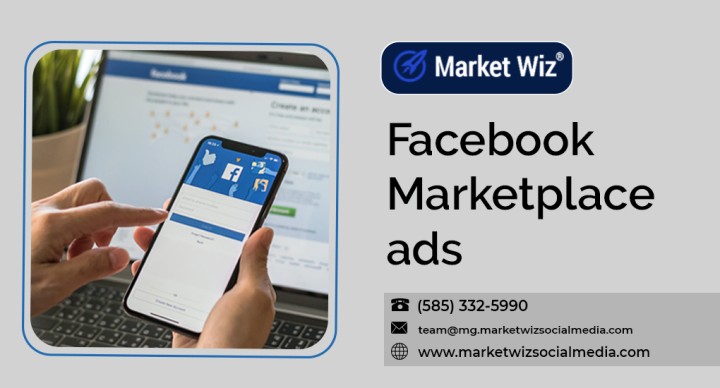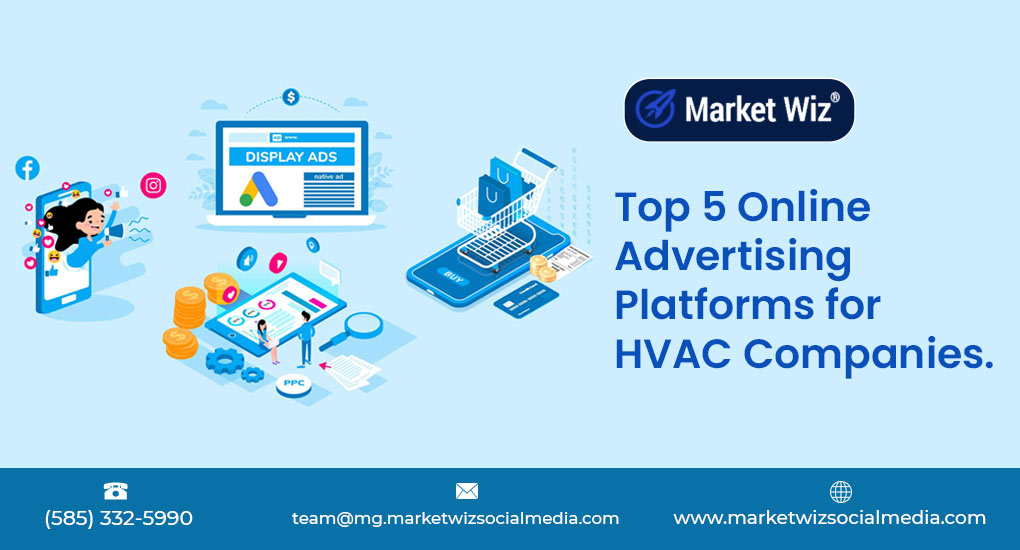Advertising Services: A Comprehensive Guide to Elevate Your Business
Introduction
Advertising serves as the bridge between businesses and their target audiences. It not only promotes products and services but also builds brand awareness, drives sales, and fosters customer loyalty. With the advent of digital technology, the advertising landscape has transformed dramatically, offering businesses a plethora of tools and platforms to reach their audience more effectively than ever before.
However, navigating this complex landscape requires expertise and strategic planning. This is where advertising services come into play. These services encompass a range of strategies and solutions designed to help businesses optimize their advertising efforts, ensuring maximum impact and return on investment (ROI).
Learn more about advertising strategies.Understanding Advertising Services
Advertising services refer to the professional services provided by agencies or consultants to create, manage, and optimize advertising campaigns across various channels. These services include:
- Strategic Planning: Developing comprehensive advertising strategies aligned with business goals.
- Creative Development: Crafting compelling ad creatives, including copywriting, graphic design, and video production.
- Media Buying: Purchasing advertising space across different platforms to reach the target audience.
- Campaign Management: Overseeing the execution and performance of advertising campaigns.
- Analytics and Reporting: Measuring the effectiveness of campaigns and providing insights for improvement.
By leveraging these services, businesses can ensure their advertising efforts are both effective and efficient, allowing them to focus on their core operations while experts handle their marketing needs.
Explore strategic planning services.Types of Advertising Services
Advertising services can be broadly categorized into digital and traditional advertising, each with its unique strategies and benefits. Below is an in-depth look at the various types of advertising services available:
Digital Advertising
Digital advertising encompasses online platforms such as search engines, social media, websites, and mobile apps. It includes various formats like display ads, banner ads, native advertising, and more. Key components include:
- Pay-Per-Click (PPC) Advertising: Businesses pay a fee each time their ad is clicked. Common platforms include Google Ads and Bing Ads.
- Display Advertising: Visual-based ads displayed on websites, apps, or social media platforms.
- Affiliate Marketing: Partnering with affiliates to promote products or services, earning a commission for each sale made through their referral.
- Email Marketing: Sending targeted emails to nurture leads and retain customers.
Benefits:
- Precise targeting based on demographics, interests, and behaviors.
- Real-time performance tracking and analytics.
- Flexibility to adjust campaigns quickly based on data insights.
Traditional Advertising
Traditional advertising refers to offline channels like television, radio, newspapers, and magazines. Despite the rise of digital media, traditional advertising remains effective for reaching broad audiences and establishing brand credibility.
Benefits:
- Wide reach, especially for local and regional audiences.
- High impact through visual and auditory storytelling.
- Credibility associated with established media outlets.
Social Media Advertising
Social media advertising involves promoting products or services on platforms like Facebook, Instagram, Twitter, LinkedIn, and Pinterest. It allows businesses to engage with their audience through sponsored posts, stories, and targeted ads.
Benefits:
- Highly engaged and active user base.
- Advanced targeting options based on user data.
- Opportunities for viral marketing and user-generated content.
Search Engine Marketing (SEM)
SEM focuses on increasing a website's visibility on search engine results pages (SERPs) through paid advertising. It includes pay-per-click (PPC) campaigns where businesses bid on keywords relevant to their offerings to appear prominently in search results.
Benefits:
- Immediate visibility and traffic.
- High intent audience actively searching for related products or services.
- Measurable ROI with detailed performance metrics.
Content Marketing
Content marketing involves creating and distributing valuable, relevant, and consistent content to attract and retain a clearly defined audience. This strategy builds trust and authority, ultimately driving profitable customer actions.
Benefits:
- Enhances SEO by providing fresh and relevant content.
- Builds long-term relationships with customers.
- Positions the business as an industry authority.
Influencer Marketing
Influencer marketing leverages the popularity and credibility of influencers—individuals with significant followings on social media or other platforms—to promote products or services. It enhances brand visibility and trust through authentic endorsements.
Benefits:
- Access to engaged and loyal audiences.
- Increased brand credibility through trusted voices.
- Potential for viral content and increased reach.
Video Advertising
Video advertising includes commercials, sponsored videos, and interactive video content distributed across platforms like YouTube, Vimeo, and social media channels. Videos are highly engaging and can effectively convey complex messages and emotions.
Benefits:
- High engagement rates.
- Ability to showcase products or services in action.
- Enhanced storytelling through visual and auditory elements.
Print Advertising
Print advertising involves placing ads in physical publications such as newspapers, magazines, brochures, and flyers. It is particularly effective for targeting local audiences and providing tangible materials for customers.
Benefits:
- Tangible and lasting presence.
- Credibility associated with established publications.
- Effective for reaching specific demographics.
Outdoor Advertising
Outdoor advertising includes billboards, transit ads, and signage placed in high-traffic areas. It offers high visibility and repeated exposure, making it ideal for brand reinforcement and reaching a large audience.
Benefits:
- High reach and frequency.
- Visual impact in strategic locations.
- Cost-effective for long-term campaigns.
Radio and TV Advertising
Radio and TV advertising provide auditory and visual promotions through broadcasts. They are effective for creating brand awareness and reaching diverse demographics through engaging storytelling and compelling visuals.
Benefits:
- Wide reach across different demographics.
- High impact through sound and visuals.
- Ability to create memorable and emotional connections.
Benefits of Professional Advertising Services
Engaging professional advertising services offers numerous advantages that can significantly enhance your business's performance and reputation:
Expertise and Experience
Advertising professionals bring specialized knowledge and experience to the table. They are well-versed in the latest trends, tools, and strategies, ensuring your campaigns are both innovative and effective.
Time Efficiency
Outsourcing advertising tasks allows businesses to focus on their core operations while experts handle their marketing needs. This ensures that advertising efforts are consistently managed without overburdening internal teams.
Access to Advanced Tools
Professional advertising services have access to the latest technologies and analytics tools, enabling them to create, manage, and optimize campaigns more effectively. These tools provide valuable insights that drive better decision-making and improved campaign performance.
Strategic Planning
Experts develop comprehensive advertising strategies aligned with your business goals. They conduct thorough market research, identify target audiences, and craft tailored campaigns that resonate with your potential customers.
Creative Innovation
Advertising services foster creativity, ensuring campaigns are unique and impactful. From compelling ad copy to eye-catching visuals, professionals ensure your brand stands out in a crowded marketplace.
Performance Optimization
Continuous monitoring and optimization are crucial for maximizing ROI. Advertising professionals track campaign performance, analyze data, and make necessary adjustments to enhance effectiveness and achieve better results.
Discover more benefits of professional advertising.How to Choose the Right Advertising Service for Your Business
Selecting the right advertising service involves evaluating several factors to ensure alignment with your business objectives and target audience. Here are key considerations:
Define Your Goals
Clearly outline what you aim to achieve with your advertising efforts. Whether it's increasing brand awareness, generating leads, driving sales, or enhancing customer loyalty, defining your goals will help you choose a service that aligns with your objectives.
Assess Expertise
Look for agencies or consultants with experience in your industry and the type of advertising you require. Review their portfolio, case studies, and client testimonials to gauge their expertise and success in similar projects.
Evaluate Services Offered
Ensure the service provider offers a comprehensive range of services that match your needs. From creative development to media buying and analytics, a full-service agency can provide integrated solutions for your advertising campaigns.
Check Portfolio and References
Review past work to understand the quality and effectiveness of their campaigns. Ask for references or client testimonials to get insights into their working relationship, reliability, and results delivered.
Consider Budget
Choose a service that provides value within your budget constraints. Discuss pricing structures, packages, and potential additional costs upfront to avoid surprises and ensure the service fits your financial plan.
Communication and Collaboration
Opt for providers who communicate effectively and are open to collaboration and feedback. A transparent and responsive communication style ensures that your vision is accurately translated into the advertising campaigns.
Performance Metrics
Ensure the service provider uses clear metrics to track and report campaign performance. Regular reporting and analysis help you understand the effectiveness of your advertising efforts and make informed decisions for future campaigns.
Learn how to choose the right advertising service.Steps to Create an Effective Advertising Campaign
Creating a successful advertising campaign involves several strategic steps. Here's a detailed roadmap to guide you through the process:
1. Research and Analysis
Conduct thorough research to understand your market, competition, and target audience. Analyze consumer behavior, preferences, and pain points to identify opportunities and threats. Competitive analysis helps you understand what works and what doesn't in your industry.
Start your market research.2. Set Clear Objectives
Define specific, measurable, achievable, relevant, and time-bound (SMART) goals for your campaign. Clear objectives provide direction and help you measure success effectively.
3. Develop a Unique Value Proposition
Clearly communicate what sets your product or service apart from competitors. Your unique value proposition (UVP) should address your audience's needs and highlight the benefits they will receive.
4. Choose the Right Channels
Select advertising channels that best reach your target audience. Whether it's digital platforms like Google Ads and Facebook or traditional media like TV and radio, choose channels that align with your audience's preferences and behaviors.
Choose the right advertising channels.5. Create Compelling Content
Develop engaging and relevant content that resonates with your audience. This includes eye-catching visuals, persuasive copy, and clear calls-to-action (CTAs). Ensure that your content aligns with your brand's voice and messaging.
6. Implement Targeting Strategies
Use data and analytics to target specific demographics, interests, and behaviors. Advanced targeting options allow you to reach users who are most likely to engage with your ads and convert into customers.
7. Launch the Campaign
Execute your campaign across chosen channels. Ensure that all elements are correctly set up, including ad creatives, targeting parameters, budgets, and schedules.
8. Monitor and Adjust
Continuously track campaign performance using analytics tools. Monitor key metrics like CTR, conversion rates, and ROI. Make necessary adjustments to optimize performance, such as tweaking ad creatives, adjusting budgets, or refining targeting.
9. Evaluate and Report
At the end of the campaign, assess its overall success against your initial objectives. Document insights and learnings to inform future advertising efforts and improve your strategies.
Evaluate your campaign performance.Measuring the Success of Your Advertising Efforts
Measuring the effectiveness of your advertising campaigns is essential for understanding their impact and optimizing future strategies. Here's how to effectively measure and analyze your campaign performance:
Key Performance Indicators (KPIs)
Monitoring the right KPIs helps you gauge the effectiveness of your advertising campaigns and identify areas for improvement. Key KPIs include:
- Return on Investment (ROI): Measures the profitability of your campaigns by comparing the revenue generated to the costs incurred.
- Conversion Rate: Tracks the percentage of users who take desired actions, such as making a purchase, signing up for a newsletter, or downloading an app.
- Click-Through Rate (CTR): Measures the effectiveness of your ads in generating clicks. A higher CTR indicates that your ad is compelling and relevant to the audience.
- Cost Per Click (CPC): Calculates the cost incurred for each click on your ad. Lower CPC indicates more cost-effective campaigns.
- Cost Per Acquisition (CPA): Determines the cost of acquiring a new customer. It helps in assessing the efficiency of your advertising spend.
- Impressions and Reach: Impressions measure the total number of times your ad is displayed, while reach indicates the number of unique users who see your ad.
- Engagement Metrics: Includes likes, shares, comments, and other interactions. High engagement indicates that your content resonates with your audience.
- Website Traffic: Monitors the amount of traffic driven from advertising platforms to your website, often tracked through UTM parameters and Google Analytics.
- Customer Feedback: Analyzes reviews, comments, and direct messages to gauge customer satisfaction and identify areas for improvement.
- Sentiment Analysis: Assesses the overall sentiment of customer interactions, whether positive, negative, or neutral.
Tools for Measuring Advertising Success
Utilizing the right tools is crucial for accurately tracking and analyzing your campaign performance. Some of the most effective tools include:
- Google Analytics: Provides comprehensive data on website traffic, user behavior, and conversion tracking. It integrates seamlessly with Google Ads, allowing for detailed performance analysis.
- Facebook Ads Manager: Offers detailed analytics for Facebook and Instagram campaigns, including insights into reach, engagement, and conversion metrics.
- Google Ads: Tracks performance metrics for search and display campaigns, including CTR, CPC, and conversion rates.
- HubSpot: Integrates marketing, sales, and service analytics, providing a holistic view of your advertising performance and customer journey.
- SEMrush: Offers competitive analysis and performance tracking for digital campaigns, including keyword rankings, backlink analysis, and PPC performance.
- Hootsuite Analytics: Aggregates data from multiple social media platforms, offering comprehensive performance reports and insights.
- Sprout Social: Provides in-depth analytics, reporting, and social listening capabilities to monitor your brand's performance across various channels.
- Buffer Analyze: Offers analytics and reporting tools to measure the impact of your social media campaigns and optimize your strategies.
Analyzing Data for Continuous Improvement
Data analysis is not just about collecting metrics; it's about interpreting them to make informed decisions. Here's how to effectively analyze your social media data:
Identify Trends and Patterns
Look for recurring trends and patterns in your data. Identify what types of content consistently perform well and understand the factors contributing to their success. For example, if video content consistently generates higher engagement, consider incorporating more video elements into your campaigns.
Compare Against Goals
Regularly compare your performance metrics against your predefined goals. This helps you assess whether your strategies are on track and identify areas needing adjustment. If your goal was to increase website traffic by 20% and you've achieved only 10%, it indicates the need for strategy refinement.
Understand Your Audience
Analyze demographic and behavioral data to gain a deeper understanding of your audience. This insight allows you to tailor your content and campaigns to better meet their needs and preferences. For instance, if a significant portion of your audience is mobile users, ensure your ads are optimized for mobile devices.
Adjust Strategies Accordingly
Use your data insights to refine your social media strategies. Experiment with new content formats, posting times, and advertising techniques based on what the data indicates works best for your audience. Continuous optimization ensures that your campaigns remain effective and relevant.
Set SMART Goals
Establish Specific, Measurable, Achievable, Relevant, and Time-bound (SMART) goals for your social media campaigns. SMART goals provide clear direction and facilitate the tracking of progress and success. For example, setting a goal to increase Instagram followers by 15% over the next three months provides a clear target and timeframe.
Use A/B Testing
Experiment with different content formats, headlines, images, and ad creatives to determine what performs best. A/B testing helps you refine your strategies based on empirical evidence rather than assumptions. For example, test two different ad headlines to see which one drives more clicks.
Implement continuous improvement strategies.Common Advertising Mistakes to Avoid
Avoiding common pitfalls can enhance the effectiveness of your advertising campaigns. Here are some mistakes to watch out for:
1. Lack of Clear Objectives
Without defined goals, it's challenging to measure success. Ensure that each campaign has specific, measurable objectives aligned with your overall business goals.
2. Poor Targeting
Misaligned targeting can lead to wasted resources and low engagement. Utilize advanced targeting options to reach the right audience based on demographics, interests, and behaviors.
3. Ignoring Analytics
Failing to monitor performance prevents timely optimizations. Regularly review analytics to understand what's working and what's not, and adjust your strategies accordingly.
4. Inconsistent Branding
Inconsistent messaging and visuals can confuse your audience. Maintain a unified brand voice and aesthetic across all advertising channels to reinforce brand recognition.
5. Overlooking Mobile Users
Neglecting mobile optimization can exclude a significant portion of your audience. Ensure that your ads are responsive and visually appealing on all devices.
6. Underestimating the Competition
Not analyzing competitors can lead to ineffective strategies. Conduct competitive analysis to understand your competitors' strengths and weaknesses and identify opportunities for differentiation.
7. Ignoring Customer Feedback
Failing to address feedback can harm your brand's reputation. Actively listen to customer feedback and use it to improve your products, services, and advertising strategies.
8. Overloading with Ads
Excessive advertising can lead to audience fatigue and annoyance. Maintain a balanced advertising frequency to keep your audience engaged without overwhelming them.
9. Not Utilizing Video Content
Video content is highly engaging and can significantly boost your campaign's effectiveness. Incorporate video elements to enhance storytelling and capture attention.
10. Failing to Adapt to Trends
The advertising landscape is constantly evolving. Stay updated with the latest trends and technologies to keep your campaigns relevant and effective.
Avoid these advertising mistakes.Future Trends in Advertising Services
Staying ahead of emerging trends ensures your advertising strategies remain effective and relevant. Here are some trends shaping the future of advertising:
1. Personalization Through AI
Artificial Intelligence (AI) enables hyper-personalized advertising by analyzing vast amounts of data to tailor ads to individual preferences. Personalized ads increase relevance and engagement, leading to higher conversion rates.
2. Interactive and Immersive Content
Interactive ads, such as polls, quizzes, and augmented reality (AR) experiences, engage users more deeply. Immersive content enhances user experience and fosters a stronger connection with the brand.
3. Video Dominance
Video content continues to dominate the advertising landscape. Short-form videos on platforms like TikTok and Instagram Reels are particularly effective in capturing attention and conveying messages quickly.
4. Voice Search Optimization
With the rise of voice-activated devices, optimizing ads for voice search is becoming crucial. Voice search optimization ensures your ads are discoverable through voice commands, enhancing accessibility and reach.
5. Sustainability and Social Responsibility
Consumers increasingly prefer brands that demonstrate social responsibility and sustainability. Incorporating these values into your advertising messages can enhance brand loyalty and attract conscientious consumers.
6. Programmatic Advertising
Programmatic advertising automates the buying and selling of ad inventory using software and algorithms. It enables more efficient and precise targeting, ensuring ads reach the right audience at the right time.
7. Influencer Collaborations
Collaborating with micro and nano influencers—those with smaller but highly engaged followings—provides authentic endorsements and targeted reach. These collaborations are cost-effective and can yield high engagement rates.
8. Data Privacy and Ethical Advertising
With growing concerns about data privacy, ethical advertising practices are becoming paramount. Ensuring transparency in data usage and respecting user privacy builds trust and compliance with regulations.
9. Blockchain for Advertising Transparency
Blockchain technology offers transparency in ad transactions, preventing fraud and ensuring that advertising budgets are spent effectively. It enhances trust between advertisers and publishers.
10. Integration of Augmented Reality (AR) and Virtual Reality (VR)
AR and VR technologies create immersive advertising experiences that engage users in novel ways. These technologies allow users to interact with products virtually, enhancing the decision-making process.
Stay ahead with future advertising trends.Conclusion
Advertising services are integral to the growth and success of businesses in today's dynamic marketplace. By understanding the various types of advertising services, leveraging professional expertise, and staying abreast of emerging trends, businesses can create effective campaigns that resonate with their target audience, drive engagement, and achieve their marketing objectives.
Key Takeaways
- Diverse Advertising Services: From digital to traditional, understanding the different types of advertising services helps in selecting the right strategies for your business.
- Professional Expertise: Engaging professional advertising services ensures your campaigns are strategically planned, creatively executed, and effectively managed.
- Continuous Optimization: Regular monitoring and data analysis are essential for optimizing campaign performance and maximizing ROI.
- Avoid Common Mistakes: Steering clear of common advertising pitfalls enhances the effectiveness and efficiency of your campaigns.
- Stay Ahead with Trends: Adapting to future trends like AI personalization, interactive content, and ethical advertising ensures your strategies remain relevant and impactful.
Final Thoughts
Effective advertising is an ongoing process that requires dedication, creativity, and adaptability. By leveraging the right advertising services and continuously refining your strategies based on data insights, your business can achieve sustained growth and maintain a competitive edge in an increasingly digital world.
Contact us today to elevate your advertising strategies.
















